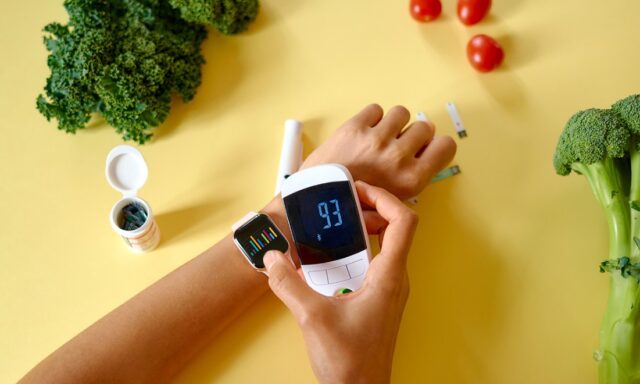
If you’ve ever felt like your energy dips after meals or noticed weight clinging around your middle no matter what you eat, blood sugar may be behind it. You don’t need a diagnosis to benefit from better balance. The right foods can change the way your body feels, looks, and functions every single day.
Let’s walk through the science-backed foods that actually help—not the trendy ones that overpromise and underdeliver. Whether you’re managing prediabetes or insulin resistance or just want fewer crashes and cravings, there’s a smart and doable way forward.
Start with Fiber Every Single Day
Fiber is the foundation. If there’s one daily habit I encourage my clients to adopt, it’s building meals around fiber—not protein, carbs, and not fat. Why? Because fiber slows digestion and glucose absorption.
Soluble fiber, especially from foods like chia seeds, flaxseeds, lentils, and oats, forms a gel in your gut. That gel slows down how fast sugar enters your bloodstream.
How to bring more fiber into your meals:
- Add a tablespoon of chia seeds to your morning yogurt.
- Use lentils or black beans as the base for lunch bowls.
- Make roasted Brussels sprouts, broccoli, or carrots a non-negotiable side at dinner.
Even if you’re already eating whole grains, it might not be enough. Aim for 25–30 grams daily and focus on variety, not just quantity. Fiber works best when it comes from multiple sources.
Pair Protein with Every Carb

Carbs aren’t the enemy—unbalanced carbs are. A piece of fruit on its own spikes blood sugar faster than the same fruit paired with almonds or boiled eggs. Protein helps slow absorption and creates a more gradual rise in glucose.
Eggs, wild-caught salmon, chicken thighs, Greek yogurt, lentils, and hemp seeds are strong protein options. Don’t ignore plant sources—they often come with fiber, which makes them doubly helpful.
If your schedule feels chaotic and meals are rushed, a targeted blood sugar supplement may fill some gaps—but it works best when your plate already supports stable glucose. Supplements should enhance, not substitute.
Use protein to anchor every meal. You’ll notice fewer afternoon crashes, steadier moods, and less late-night snacking.
Embrace Bitter Foods—They Really Help
Most modern diets miss bitter foods entirely. But bitter flavors have been used for centuries to support digestion and metabolism. They stimulate bile flow and support liver function, which indirectly supports blood sugar balance.
Here are a few worth adding:
- Dandelion greens
- Arugula
- Radicchio
- Kale (raw or lightly sautéed)
Start with a small salad before meals. It helps prepare your digestive system, and the bitter compounds have real effects on how your body handles sugars and fats.
Fermented Foods Improve Insulin Sensitivity
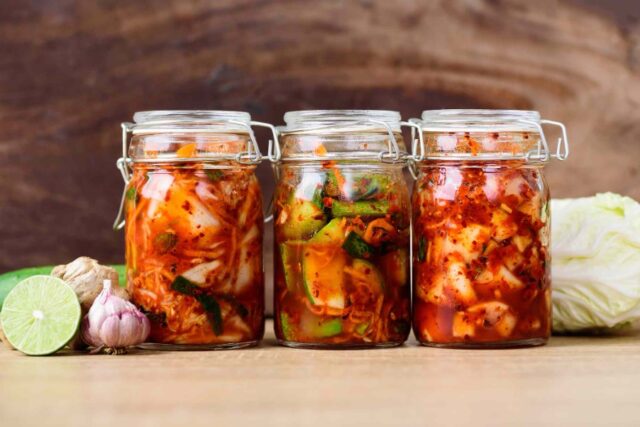
Your gut and blood sugar are deeply connected. A healthy gut microbiome can improve insulin sensitivity, reduce inflammation, and regulate hunger hormones.
Fermented foods introduce beneficial bacteria into the gut. They’re not magic, but they support better nutrient absorption and smoother glucose control.
Reach for:
- Plain kefir or unsweetened yogurt
- Sauerkraut
- Kimchi
- Miso paste
- Tempeh
Consistency matters here. A spoonful once a week won’t move the needle, but a small daily portion can. Add a little sauerkraut to your lunch or sip kefir as an afternoon snack.
Cinnamon and Vinegar Are Easy Wins
Cinnamon has been shown in multiple studies to help lower fasting blood sugar. But you need the right kind. Ceylon cinnamon is the more effective and safer long-term option than the common cassia type.
Sprinkle it on plain oatmeal or stir it into coffee. Avoid pairing it with sugar-laden desserts—it works best alongside whole food meals.
Apple cider vinegar is another tool. It can slow the breakdown of starches and reduce post-meal glucose spikes. Mix a teaspoon in water before meals or use it in salad dressings.
Important: Always check with your healthcare provider before using vinegar regularly, especially if you have acid reflux or low potassium.
Berries Are Your Best Fruit Friend
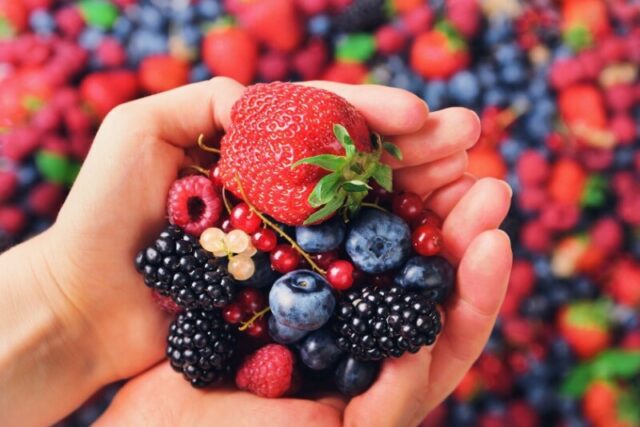
Fruit isn’t off-limits. It’s about picking the right ones and pairing them smartly. Berries—especially blueberries, raspberries, and blackberries—contain powerful polyphenols that can improve glucose metabolism.
They’re lower in sugar than tropical fruits and high in antioxidants. Eat them with protein or fat for the most stable blood sugar response.
Example:
- Greek yogurt with raspberries and walnuts
- Blueberries in a smoothie with protein powder and almond butter
Beans and Legumes ─ The Forgotten Superfood
Beans have a unique ability to stabilize blood sugar, thanks to their fiber and resistant starch. Unlike other carbs, their effect lasts hours after eating.
One study found that eating legumes regularly can reduce A1C levels—a key marker for long-term blood sugar control.
Try:
- Black bean chili
- Lentil soup
- Hummus on sliced cucumbers or carrots
Don’t worry about carbs in beans. Their glycemic load is low, and their benefits far outweigh any concern about starch.
Nuts and Seeds for Steady Energy
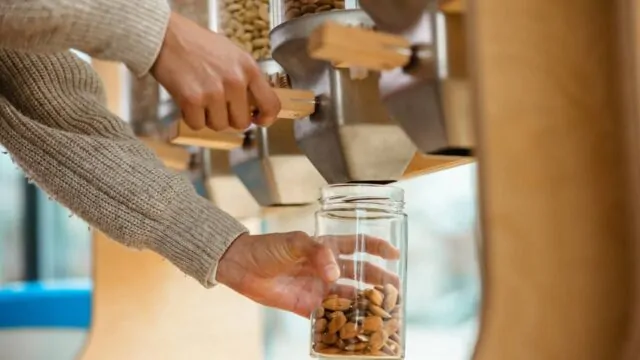
Almonds, walnuts, sunflower seeds, and pumpkin seeds all provide healthy fats, magnesium, and plant protein. They make an excellent midday snack, especially when you’re short on time.
Keep small portions on hand so you’re not reaching for ultra-processed snacks between meals. A handful of almonds or a tablespoon of tahini can hold you over without sending your blood sugar soaring.
They also help reduce inflammation, which often contributes to insulin resistance.
Smart Swaps for Blood Sugar Balance
Making small changes to your daily choices can add up to big wins. If your meals still rely heavily on white bread, pasta, or sugary drinks, start replacing one item at a time.
Easy swaps to make:
- Replace white rice with quinoa or cauliflower rice
- Swap fruit juice for whole fruit and water
- Use hummus instead of sweet spreads
- Choose whole grain or almond flour tortillas over refined ones
Each swap contributes to a slower glucose response and fewer cravings later.
Don’t Skip Meals ─ Plan Instead
Skipping meals creates blood sugar chaos. You might feel lighter skipping breakfast, but by late afternoon, the body pushes you toward carbs and fast energy.
Instead of fasting aggressively, eat balanced meals every 4–5 hours. Focus on fiber, protein, healthy fats, and a small portion of slow-digesting carbs.
Planning ahead helps. Make a batch of lentil soup or veggie-loaded quinoa salad early in the week. Pre-portion snacks like hard-boiled eggs or chia pudding so you’re not scrambling mid-day.
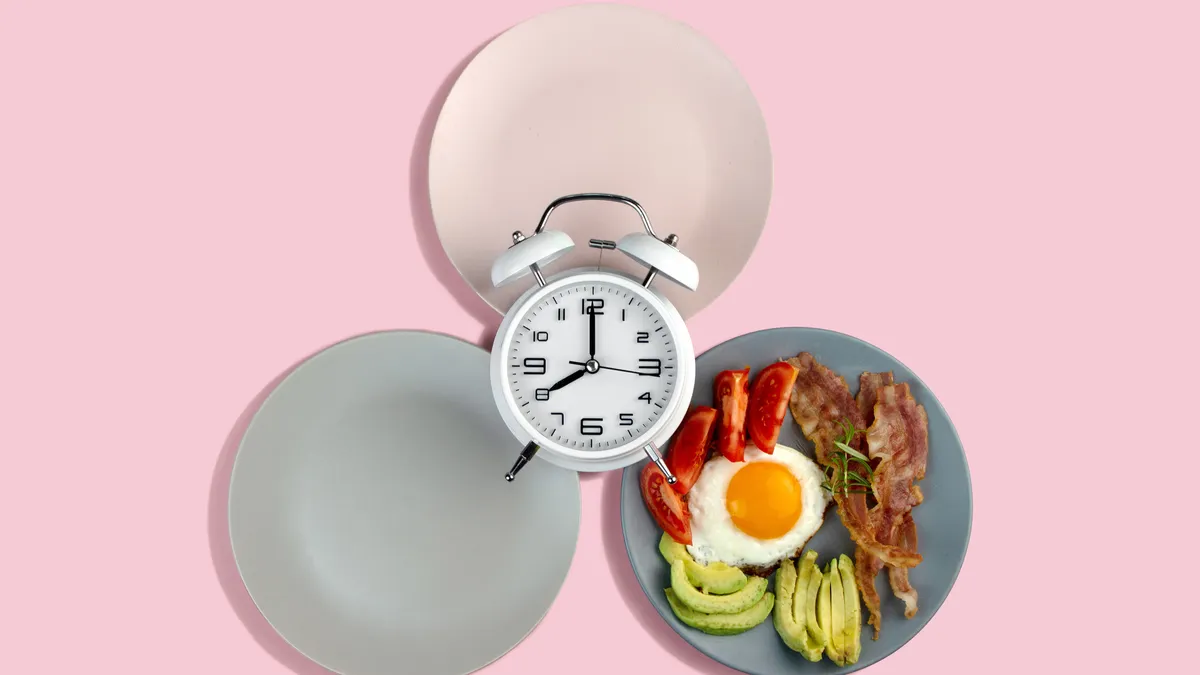
Conclusion ─ Start with One Change Today
Your blood sugar doesn’t need to be perfect—it needs to be steady. You don’t have to overhaul your life overnight. Just start. Add one new food. Build one balanced plate. Drink water before reaching for coffee.
Over time, those shifts make a difference. They support your energy, your sleep, your mood, and your long-term health.
You don’t need fear. You need food that works with your body, not against it. And a reminder that you’re not too late, too old, or too far gone to change how you feel.









